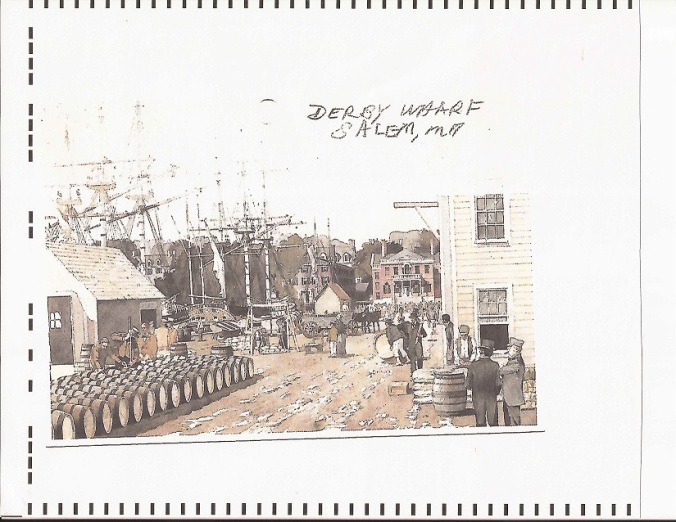
Here is where Patrick Driscoll worked, in Derby Warf, Salem MA. Laborers loaded and unloaded from sailing ships from China, and elsewhere.
The Irish faced many struggles for employment, due to discrimination. However when the Irish were able to find jobs they were often paid poor wages. When the Irish were hired for jobs they were seen as mealy cheap labor. They were hired because immigrants would accept any amount of money in desperate need to feed their families, as opposed to Anglo-American workers, who had higher standards for minimal wages. The Irish had to build up a reputation over time in order to be accepted by America.
My ancestors were common laborers and also worked in domestic service as well. Patrick Driscoll was a laborer and loaded and unloaded sailing ships. His children Patrick and John Driscoll worked in a Jute factory (fiber that can be spun into thread). According to Making The Irish American “Domestic service was the single biggest form of Irish employment for Irish women between 1850 and 1900.” My great grandmother Margaret worked as a cook, for a family, in Beverly MA. Mary Sexton also worked in domestic service as a servant girl. Irish women’s roles in American society at the time were commonly known to be in domestic work, and for the men to have common labor jobs.
Margaret’s husband, James worked several jobs and eventually worked at the United Shoe Machinery Corp in Beverly MA, for 40 years, building machinery to make shoes. From the mid-19th century to the early 20th century gender roles were defined amongst the Irish, as well as social status, as the Irish were known to rake the lower paying jobs, to make a living in America.